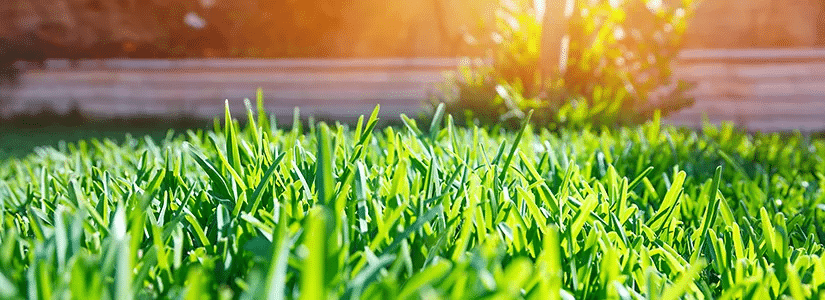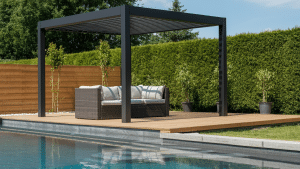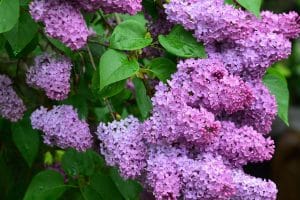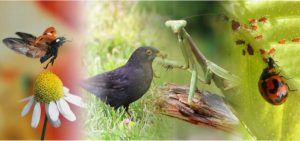When it comes to your lawn, especially in the sun-loving Southern heat, regular lawn maintenance is key. Whether you’re wondering how to maintain a lawn on a budget or seeking an effective lawn maintenance schedule, this guide covers Southern lawn maintenance tips to ensure a lush, vibrant turf, a happy wallet, and low stress.
It may be tempting to shrug off lawn care as “I’ll get around to it,” but in the long run, a patchy, dormant, diseased, overgrown lawn will be a budget-eating monster. In short, neglecting your lawn adds up. Skip the pricey repairs. In this article, you will learn how to stay on top of your lawn maintenance, save money, and have a lawn that thrives in the Southeast. For Georgia homeowners, these lawn maintenance tips are tailored to your warm-season grasses.
Lawn Maintenance for Bermuda, Zoysia, and Centipede Grasses
Most Southern lawns are filled with warm-season grasses like Bermuda, Zoysia, or Centipede. This is because these grass seed types thrive in hot tropical weather with lots of sun. Want to learn more about what grass type your lawn is working with? Check out our in-depth article on warm vs cool season grasses.
Lawn maintenance for Bermuda, Zoysia, and Centipede grass is similar with slight variations. For example, each grass type performs well at specific mowing heights: Bermuda at 0.5–1.5 inches, Zoysia at 1–1.5 inches, and Centipede at 1.5–2 inches. You can lock these in as a rule of thumb.
The other variations we’ve broken down for you below to keep your lawn thriving throughout the seasons.
Bermudagrass Lawn Care Tips
- Apply 1 pound of nitrogen per 1,000 square feet every 4–6 weeks (April–September).
- Total 3–6 pounds annually, depending on your USDA zone (e.g., 6 pounds in zone 8b).
- Reduce to 0.5 pounds in fall/winter.
Herbicides are popular for weed control. Use as needed to discourage the growth of white clover, knotweed, and crabgrass. Two to three applications, 7–10 days apart, are required to control these weeds. When experiencing drought, cease herbicide application.
When it comes to water, one inch of water a week will do the trick, but be mindful to supplement with rainfall. If your Bermuda is turning bluish-gray or appears wilted, folded, or curled, it is an indication that water is needed.
Pro Tip:
For Southern soils, remember 2-in-1. Southern soils are often more clay in nature, so irrigate your lawn until runoff occurs, wait for water to be absorbed, and then water again. This is due to clay being slower to absorb water. Watering before 8 a.m. helps reduce disease risk by allowing grass to dry during the day. If you have more sandy soil, your lawn will require ½ inch more water than clay soils. Need help determining your soil? Contact us and we can let you know.
Zoysia Lawn Care Tips
- Start with a soil test. No soil test, no problem—your next best option is to apply nitrogen-phosphorus-potassium (NPK) turf fertilizer.
- Apply 0.5–1 pound of nitrogen per 1,000 square feet per application, totaling up to 4–6 pounds annually (e.g., 6 pounds in zone 8b).
Select a Zoysia grass herbicide that eliminates the growth of two or three different broadleaf weeds in this lawn. If you apply a pre-emergence herbicide in early spring, when your grass is vibrantly green during the hot summer, you’ll only use a herbicide if you see weeds emerging (which should be minimal as you applied a layer in spring).
When it comes to water, Zoysia grass needs 0.5 to 1 inch of water weekly. If you witness wilted, folded, curled, or a dark-blue-gray appearance, it is the grass’s way of saying, “I need water.” Proper irrigation should be at a depth of 4 to 6 inches, ideally before 8 a.m. to minimize disease. Proper irrigation will be critical to reducing problems in performance.
Need support with installing irrigation or have no idea where to begin? Give us a call, we would be glad to help you or point you in the right direction.
Pro Tip:
Remember that Zoysia grass is slow-growing. If you spot tan or brown sunken patches of turf, your grass may thin out, and some shoots may die. You might notice these symptoms in extended rainy seasons or cooler overcast weather, but fear not, as the heat and sunshine pick up, so will your Zoysia. The comeback process is slow, so resist the urge to apply more nitrogen until you see the lawn improving.
Centipede Lawn Maintenance Tips
- After you check your soil and have Centipede grass installed and budding, use a basic fertilizer at 1 pound or less of nitrogen per 1,000 square feet (e.g., 1 pound in zone 7b, up to 2 pounds in zone 8b).
- If you see a yellowish appearance, it may indicate an iron deficiency. Try spraying iron sulfate or a chelated iron source to enhance color performance as needed. Your fertilizer application and iron sulfate application should see a “green” color performance turnaround in 24 hours.
Centipede grass is the most sensitive out of the three best-performing Southern grasses to herbicides. Reading package labels and asking questions will ensure you obtain the right herbicide that will terminate the weeds yet keep your Centipede grass thriving. Choose herbicides labeled safe for Centipede, such as atrazine for broadleaf weeds, and apply only when grass is green, typically in late spring or early summer.
A fairly low-maintenance grass here, requiring only around one inch of water per week, ideally before 8 a.m. to reduce disease risk. This can be from rainfall or irrigation.
Signs of Lawn Maintenance Neglect
While warm grass types like Bermuda and Zoysia are pretty tough and resilient, they throw in the towel without regular TLC like mowing, fertilization, irrigation maintenance, weed control, and aeration.
Lawn maintenance neglect often looks like:
- Wild Weeds – Dandelions are great for your physical health and fun to make a wish with but a nuisance in lawns. Crabgrass, clovers, and dove weed are popular in the Southeast. If you spot these in your lawn, remove them, or better yet, be proactive and prevent them from sprouting.
- Patchy Grass – Dirt patches, dead grass, and holes—like gopher holes—yup, these are all signs of lawn neglect. Solutions can be to seed new grass or install new sod (the upper layer of turf harvested for transplanting). The cost can add up here.
- Bugs – Some bugs just love grass, like mole crickets or fire ants in the Southeast. Staying on top of your lawn care decreases their presence and helps your lawn shine bright.
- Fungi/Disease – Turfgrass disease is different than dormant grass. A few key characteristics between the two is that diseased grass showing signs of fungi is often patchy, yellowing in color, has leaf spots or chlorosis. Dormant grass may look dead or a bit brown but is still alive, just not in its optimal growing season. Many warm-season grasses go dormant in the late fall and winter months. To combat this, the option to overseed with ryegrass in the South helps to maintain greener grass year-round. For more information on diagnosing your turfgrass for disease, check out the University of Georgia’s Turfgrass Disease Identification website (link).
- Broken or Jammed Sprinklers – I scream, you scream, we all scream… water damage. Flooding, dry spots, clogged nozzles, sunken areas in your lawn, water waste, overly moist soil, and other things.
Dealing with it “later” may turn into a five-figure landscaping nightmare. Lawn maintenance and proactive consistency will help your wallet and your lawn stay green.
When you stay consistent with lawn maintenance, you keep problems to a minimum and expenses in check. Ready to keep your lawn thriving? Contact us for a soil test or download our free Southern Lawn Maintenance Checklist.
FAQ: Common Lawn Maintenance Questions
How often should I mow my lawn?
- Mow Bermuda at 0.5–1.5 inches
- Mow Zoysia at 1–1.5 inches
- Mow Centipede at 1.5–2 inches weekly during the growing season.
What’s the best time to water my lawn? Water before 8 a.m. to reduce disease risk and ensure proper absorption.
How can I prevent weeds in my lawn? Apply pre-emergent herbicides in early spring and monitor for weeds like crabgrass or clover.
Southern Lawn Care Quick Guide
| GRASS TYPE | Bermuda | Zoysia | Centipede |
| Mowing Height | 0.5 – 1.5 inches | 1 – 1.5 inches | 1.5 – 2 inches |
| Nitrogen (per 1000 sq ft) | 3–6 lbs (Apr–Sep) | 4–6 lbs (annual) | 1–2 lbs (annual) |
| Watering (weekly) | 1 inch | 0.5–1 inch | 1 inch |








